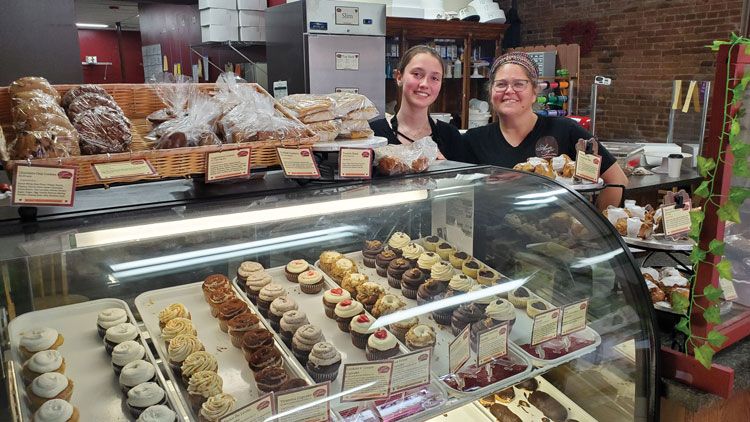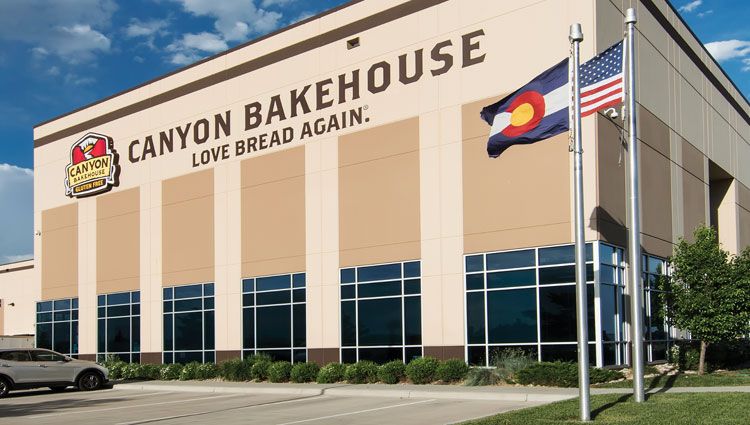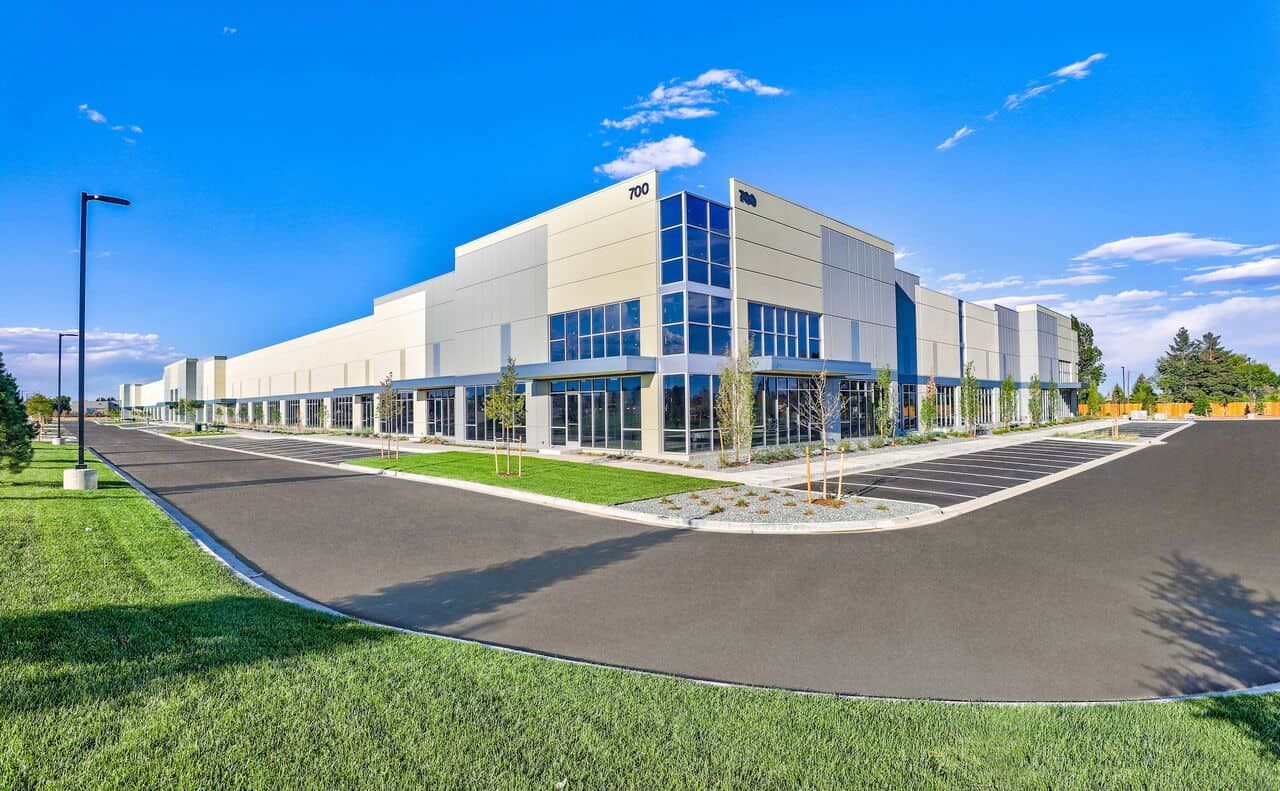Gluten-free bakeries rise to occasion, demand

Like the dough in their ovens, interest is rising in gluten-free products produced by bakeries large and small in the Boulder Valley and Northern Colorado.
Nationally, analysts predict a 9.3% compound annual growth rate for the gluten-free market through 2026.
That growth might seem puzzling given that a University of Chicago study found that celiac disease — an autoimmune disease that occurs in people who are genetically predisposed to suffer damage to the small intestine if they consume wheat-based gluten protein — affects only 1% of healthy Americans. That translates to about 3 million people. Further, a 2017 study published in the World Journal of Gastroenterology found that just 6% of the population experiences sensitivity to glutens that isn’t related to celiac disease.
SPONSORED CONTENT
So why has interest in locally based brands such as Udi’s breads and Rudi’s baked goods seen exponential growth? And why have boutique and artisanal gluten-free bakers sprung up along the Front Range and across the nation?
Local bakers say an increase in general health consciousness is fueling the trend.
“Celiac disease is a common reason people follow a gluten-free diet, but there are many other reasons people choose to eat gluten free,” said Danielle Benjamin, brand manager for Canyon Bakehouse in Johnstown. “We hear from consumers who eliminate gluten to help manage headaches, inflammation or other health issues such as Hashimoto’s disease or Crohn’s disease. Within our consumer community, we know that 90% are gluten-free due to some kind of health reason. As consumers continue to become more aware of how the foods they eat may affect their bodies, we’re seeing an increase in the number of people exploring gluten alternatives.”
Jennifer Walter, owner of Love’s Gluten-Free Bakery in Longmont, agreed.
“Gluten intolerance manifests so differently,” she said, “and a lot of people are becoming more health-conscious, and sharing information more gives people the right to advocate for themselves. Doctors are also becoming more holistic instead of just medicating.”
At Cardnl, a low-carbohydrate and gluten-free bakery in Fort Collins, co-owner Rob Benson said customers seeking gluten-free products fall into two camps.
“One is they are celiac or they’ve been diagnosed,” he said. “The other group might say, ‘I was told a couple years ago to lay off the gluten. I tried it and now my joints don’t hurt. Now I have more energy. Now the acne I had is gone. It’s a whole list of things.”
Benson said he understands the skepticism that has arisen in some quarters.
“People who don’t have any knowledge about it will say, ‘That’s a fad. How ridiculous.’ And I get it. I might think the same thing if I didn’t know all the scientific research that’s been done on it. We really didn’t see gluten sensitivity in the ‘80s. It was very rare.
“We’re definitely seeing, day to day, more people being sensitive to gluten than ever before,” he said. “It’s probably due to a vast array of circumstances, from the plastics we’re ingesting, from the smoke from wildfires here in Colorado in summer, to the overconsumption of carbs. All those are contributing to it — exposure to things the body can’t figure out how to process.”
It’s not that women are more susceptible to gluten intolerance, he said, “but I think women are more in tune with their bodies because of hormonal changes than men are. She may be more apt to go to the doctor — whereas men assume their joint pain is something they have to deal with, and it’s just stuff you could eliminate by changing your diet.
“That education aspect is the interesting spot. This attitude that ‘well, I’ve always had joint pain and there’s nothing I can do about it’ is what holds the industry back from driving a little bit more.”
Gluten-free products also meet the needs of keto and paleo dieters, Benson said.
Besides health reasons, another issue driving the increased interest in gluten-free products is that they simply taste better, thanks to research and development. Replicating the texture of a traditional slice of bread, muffin or cake without gluten was hard, but some bakers have come close by finding the right starch ratio, sometimes employing gelatinization.
Besides, said Walter at Love’s in Longmont, “good products will weed out the bad ones — and our customers find our products absolutely delicious and gluten free.”
Walter’s middle name, and the name of her bakery, is Love, a tribute to her great-great-great grandfather, Robert Love Sr., who in 1851 opened Love’s Bakery in Honolulu, which would become Hawaii’s largest bread supplier.
Love’s turns out a varied gluten-free menu including cinnamon rolls, chicken pot pies, sandwiches and specialty cakes. “We make a lot of sandwiches, too. Breakfast sandwiches, crepes, quiches, bagels.”
The key, she said, is finding the right flour to produce the right consistency for each item. “Cupcakes need a different composition than cinnamon rolls or pot pie crust,” she said. “It just takes a lot of trial and effort, a lot of experimentation.
“We buy amaranth flour, almond flower, brown rice flour, white rice flour, sweet rice flour, flax seed, garbanzo, fava flour, quinoa flour, sorghum flour, millet flour, cornstarch, potato starch, tapioca, xantham gum. Those are the raw flours we bring in, then make 15 flour mixes because everything needs a different composition of heavy-weight and light-weight flours.”
Benson found an ingredient that not only could be used to add sweetness but also met the needs of diabetics concerned about their blood sugar.
“Allulose doesn’t metabolize like sugar. It metabolizes like flour,” he said. “It’s derived from corn, grapes, anything that’s sweet that creates a fructose. They take an enzyme and they break down that fructose and create allulose. It’s not an artificial sweetener but it’s a sweetener that does not raise blood sugar but actually can lower blood sugar, and that’s pretty incredible for something that tastes a lot like sugar.”
His only problem was the supply chain.
“About a year ago, Kashi and a few other brands decided they’re going to invest heavily in allulose,” he said. “So all the suppliers got excited, forgot about the little guys like us, and started shipping all of their availability to Kashi and other big brands.”
Shopping in grocery stores for gluten-free products such as those Canyon Bakehouse turns out has gotten more consumer-friendly as well, Benjamin said.
“Packaging technology has been the game-changer,” she said. “Historically, gluten-free breads have been sold in the freezer, and it’s where many long-time gluten-free consumers have gone to find a variety of offerings. Thanks to modified-atmospheric packaging technology, gluten-free breads can now be stored at room temperature. By removing oxygen from the sealed package, we’re able to extend our product shelf life to more than 100 days.
“As stores continue to expand and shift their specialty offerings, consumers are expecting gluten-free products to be available in their respective place, not just a space dedicated to dietary needs, and the choice to buy fresh or frozen,” she said. “Canyon was able to extend availability beyond the traditional gluten-free space in supermarkets with the goal to make sure our gluten-free products are available wherever consumers are looking.”
Developing new, tastier products with better consistency will continue to drive the gluten-free market, they agreed, whether it’s at boutique shops such as Love’s or Cardnl or at mass producers such as Canyon Bakehouse, where about 200 employees work in a 165,625-square-foot dedicated gluten-free facility.
“There are still many mainstream products and segments where consumers don’t have a gluten-free option available, or don’t have easy access to one,” Benjamin said. “Our goal is to make products that provide solutions for gluten-free consumers in all eating occasions, and we see a big opportunity that has yet to be seized in the dinner-roll segment. This spring, Canyon will launch a gluten-free brioche-style dinner roll that is very versatile, flavor-forward and offers a new, unique offering for the category.
“Our brand legacy is built around inclusion and giving people back the sense of normalcy when it comes to eating bread,” she said. “Something as simple as a dinner roll can have a tremendous impact when it lives up to the expectations of great taste, wholesome, high-quality ingredients. Given the success of other product extensions, including buns, bagels and English muffins, extending to a dinner roll was a natural fit. Whether there’s one person in a household who’s gluten-free or the entire family, this is a product that can do a lot of things and be enjoyed by everyone.”
“After all, that should be our mission,” added Walter. “GF should stand for good food.”

See story from BizWest archives: Canyon Bakehouse not loafing in gluten-free race
Like the dough in their ovens, interest is rising in gluten-free products produced by bakeries large and small in the Boulder Valley and Northern Colorado.
Nationally, analysts predict a 9.3% compound annual growth rate for the gluten-free market through 2026.
That growth might seem puzzling given that a University of Chicago study found that celiac disease — an autoimmune disease that occurs in people who are genetically predisposed to suffer damage to the small intestine if they consume wheat-based gluten protein — affects only 1% of healthy Americans. That translates to about 3 million people. Further, a 2017 study published in the…
THIS ARTICLE IS FOR SUBSCRIBERS ONLY
Continue reading for less than $3 per week!
Get a month of award-winning local business news, trends and insights
Access award-winning content today!




